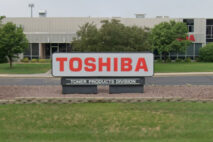Earlier this month, Toshiba America Business Solutions (TABS) announced the formation of a new services-oriented organization designed to help the firm unify its service offerings and capture market share in key growth areas. The newly formed Toshiba Managed Business Services will focus on strengthening Toshiba’s current business services offerings in managed document services (MDS) and managed print services (MPS), document security, workflow/capture, and barcode printing systems, as well as add services competence in other managed service areas.
It is not surprising that Toshiba has formed a dedicated services organization. More compelling, however, is that this group is chartered not just with growing Toshiba’s services revenue but branching out into new markets by providing managed services in areas such as digital signage and retail kiosks. Toshiba is no different than any other hardware manufacturer: its core print-related business is under attack from economic pressures, a volatile competitive environment, and ongoing changes in business process fueled by widespread adoption of tablets and other mobile technologies. In short, there are simply fewer reasons for office users to print these days.
For most original equipment manufacturers (OEMs), MPS has been positioned front and center as the key growth engine for their hardcopy business. In the face of dwindling hardware sales, price and margin compression for hardware and traditional break/fix services, and declining print volumes, manufacturers focused on the promise of MPS as a means to grow market share and capture pages from competitors. The problem, of course, is that nearly every equipment manufacturer is pushing MPS, and there is no way to grow the market when pages are simply shifting from one device to another and from one provider to another.
Meanwhile, new competitors are jumping into the MPS space as more and more office printing transitions to a managed service model. It is no longer just the printer and MFP OEMs and their indirect channel partners pushing MPS—aftermarket supplies resellers, IT value-added resellers (VARs), and managed service providers (MSPs), many of whom until recently have basically ignored office printing, have now entered the market. The overall market opportunity is shrinking and the number of competitors is growing. Talk about a challenging market!
Finding Adjacencies
Naturally, providers in the hardcopy space are looking for alternative revenue sources to augment their core print-related revenues. Indeed, the phrase “adjacent business” has reached buzzword status in the imaging space—right up there with terms such as “transformation,” “services organization,” and “solutions provider.” Nearly every OEM these days is talking about its strategy to attack adjacent businesses or market segments.
Toshiba’s approach appears sound: leverage existing resources and infrastructure in professional services, sales, and support to target new market segments that actually closely align with printing. Digital signage, for example, is still a relatively new medium that is growing by leaps and bounds, yet it is not all that far removed from traditional print. Toshiba is not positioning its new dedicated services business unit as a channel for providing office-equipment solutions, but rather as a provider of business communications solutions. That makes sense.
The hardcopy industry is changing right in front of our eyes. As we transition from hardware to services, it is no longer about unit share or even page share—it is about customer share. There is a real need to transform and to move beyond print to capture additional share of customer spending. Of course, MPS has always been viewed as a means for OEMs to drive incremental revenue, not only by capturing pages from competitive devices but also by leveraging the MPS customer relationship to drive other value-add services, such as managed IT, network services, and business process outsourcing (BPO). Yet for some, a full-blown transition to services may not come so easily—especially for incumbent providers that are heavily invested in traditional business models. Change is always harder on those for which change causes the most disruption.
Identifying and attacking adjacent businesses is a necessity these days, but there are dangers in overreaching: expanding into market segments for which your company may not have core competencies, or expanding into market segments that do not offer shared characteristics with the markets you already serve. There are examples of this occurring in our industry already. Choose wisely, and make sure that new targets not only complement existing markets but also existing resources and infrastructure.
Robert Palmer is an independent market analyst and industry consultant. With more than 20 years of experience in the printing industry, he has covered technology and business for prominent market research firms such as Lyra Research and InfoTrends. He was managing editor for the Hard Copy Observer for six years and more recently served as director of office document services for Photizo Group.






